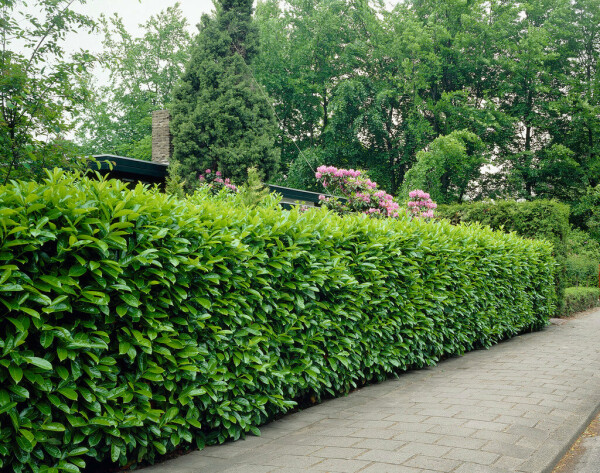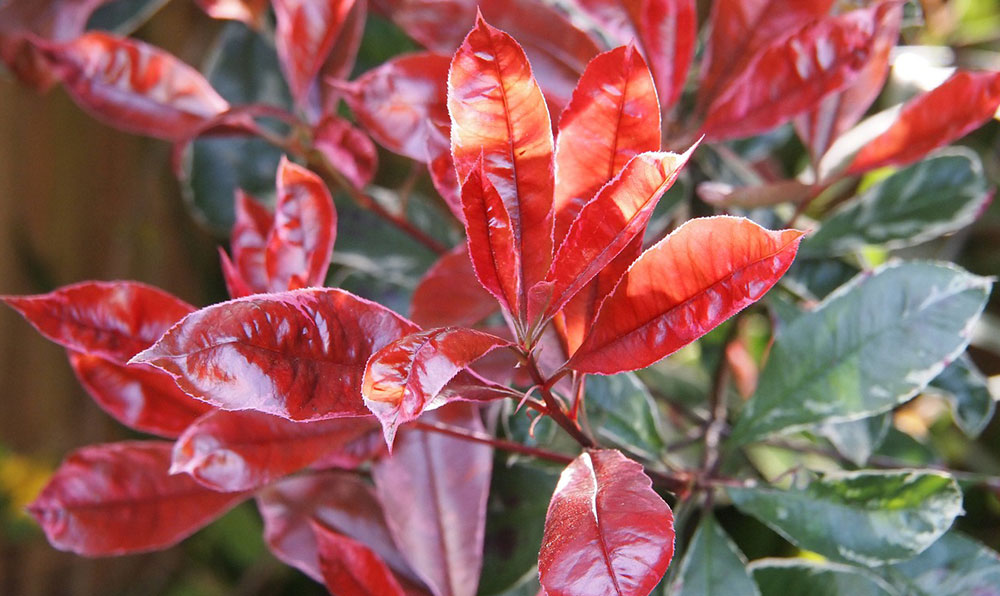Best Hedging Plants For Fast Growth
Best Hedging Plants For Fast Growth
Blog Article
Best Hedging Plants For Garden Rooms
Enhance your garden's allure with rich hedge varieties such as Yew (Taxus), Thuja, Laurel, Photinia, and Bamboo, celebrated for their structural integrity and ecological benefits.
Yew and Thuja provide evergreen protection and winter durability, while Laurel offers fast development and broad, aromatic leaves.
Photinia adds seasonal beauty with its vibrant red foliage, and Bamboo provides a low-maintenance, peaceful ambiance.
These hedges enhance air quality, decrease sound, and produce tranquil, private areas.
Correct planting, spacing, and upkeep ensure energetic growth and environmental harmony.
Check out how these rich ranges can elevate your garden's appeal and well-being.
Secret Takeaways
Transform Your Garden With Lush Hedge Ranges
- Select Yew for its dense, evergreen growth and unrivaled durability.
- Choose Laurel for its quick growth and broad leaves, making sure quick privacy.
- Select Photinia for its lively seasonal foliage, which turns a striking dark red.
- Use Bamboo for a low-maintenance, winter-hardy hedge with visual appeal.
- Space plants 2-3 per meter and prune routinely for optimum growth and health.
Popular Hedge Plants
When changing a garden with rich hedge varieties, it's important to consider popular hedge plants such as Yew, Thuja, Laurel, and Photinia due to their distinct attributes and benefits.
Yew (Taxus) is highly respected for its longevity and dense, green development, making it a prime option for enduring landscapes.
Thuja is kept in mind for its evergreen foliage and robust winter durability.
Photinia includes seasonal vibrancy with red leaves that darken in time, producing dynamic visual appeal.
Laurel provides quick development and aromatic, broad leaves, ideal for fast personal privacy.
In Addition, Bamboo is an exceptional choice for atmosphere, providing a low-maintenance, winter-hardy alternative that boosts the garden's visual with its elegant, swaying canes.
These selections accommodate a variety of horticultural needs and preferences.
Benefits of Garden Hedges
Garden hedges use a multitude of benefits, making them an important addition to any landscape. These natural barriers are cost-effective to implement and offer significant wind security, enhancing air flow and contributing to sound reduction. The thick foliage of hedges like Thuja and Beech ensures personal privacy by blocking visibility, creating a peaceful and secluded environment.
Hedges likewise play a vital role in microclimate regulation, providing a steady environment that promotes plant development and decreases temperature level fluctuations. Their intricate leaf structures filter toxins, enhancing air quality and contributing to a much healthier garden community.
Moreover, hedges master sound reduction, absorbing and deflecting sound waves to lower ambient sound levels. This dual functionality of offering both visual and acoustic privacy enhances the general tranquility and visual appeal of any garden.
Planting and Maintenance Tips
For an effective hedge, careful preparation of the planting area is essential. Make sure the soil has appropriate pH and drain to support strong root development.
Area the plants appropriately for the picked types. Water the hedge frequently during its preliminary development phase, adjusting as needed with seasonal changes.
Execute a methodical pest control and disease avoidance technique, using natural or chemical treatments when required. Regularly examine for aphids, mites, and fungal infections.
Apply mulch to keep moisture and reduce weeds. Seasonal pruning promotes dense development and air flow, vital for plant health.
Following these guidelines will assist you cultivate a dynamic, well-maintained hedge that boosts the appeal of your garden.
Spacing and Trimming Standards
Spacing and Cutting Guidelines
Appropriate spacing and trimming are essential for cultivating healthy, visually appealing hedges. Adequate spacing guarantees each plant receives sufficient nutrients, light, and air flow.
Follow these standards for optimum hedge upkeep:
- Spacing: Position hedge plants 2-3 plants per meter to motivate robust growth.
- Pruning Methods: Routine pruning is necessary for keeping wanted hedge height and shape. Cut brand-new development in summer season and cut down older wood during winter.
- Seasonal Care: Adjust cutting schedules and approaches according to seasonal requirements to make sure plant health.
- Hedge Height: Frequently screen and cut to preserve the preferred hedge height and achieve uniform aesthetic appeals.
Following these steps will ensure your hedge grows, improving both the appeal and functionality of your garden.
Choosing the Right Hedge
Picking the Right Hedge
Picking the suitable hedge involves examining aspects such as fully grown height, foliage density, and ecological durability. Effective hedge plant selection needs understanding each types' growth characteristics and site-specific flexibility.
For example, Yew (Taxus) uses exceptional durability and dense development, while Thuja is notable for its winter season durability. In addition, considering maintenance requirements is essential; fast-growing types like Laurel or Privet need regular trimming, whereas low-maintenance alternatives like Bamboo or Ivy may be preferable for those looking for very little upkeep.
Environmental aspects such as soil type, light schedule, and moisture conditions ought to likewise assist the selection process. This cautious technique makes sure the picked hedges will thrive, providing both visual and functional benefits to the garden landscape.
Delivery and Planting Recommendations
To guarantee your hedge plants grow, they need to be provided by specialized carriers and planted promptly upon arrival.
Follow these important steps for successful planting:
- Soil Preparation: Enrich the soil with raw material to improve drainage and nutrient material.
- Planting Depth: Develop a trench two times the width and equivalent to the depth of the root ball.
- Watering Methods: Water thoroughly after planting, keeping the soil consistently moist however not filled.
- Mulching: Use a layer of mulch to maintain moisture and suppress weeds.
Client Support and Service
Offered the vital function of timely help in horticultural pursuits, our client support group is offered 6 days a week through telephone, e-mail, and social media to use professional guidance and promptly attend to any concerns. Their commitment to quick reaction times ensures client satisfaction by solving inquiries related to plant health, optimal planting methods, and maintenance schedules.

Within 48 hours
This thorough support group, strengthened by a stellar 9.3/ 10 customer ranking, highlights our commitment to boosting the gardening experience for every client.
Often Asked Questions
The Length Of Time Does It Consider Hedge Plants to Establish?
Hedge plants typically need one to three years to end up being fully established, with the specific duration differing by species and growing conditions.
Effective care during this crucial period is important for robust growth. Consistent watering, vigilant weed control, and suitable fertilizer application are critical in promoting strong root development.
For instance, fast-growing species like Laurel may develop quicker, while slower-growing ranges such as Yew may take longer. Persistent upkeep accelerates the establishment process, leading to healthy and dense hedges.
What Are the Best Hedge Plants for Privacy?
The concern of the best hedge plants for privacy involves assessing evergreen and deciduous choices.
Evergreen hedges like Thuja, Laurel, and Cypress provide year-round protection, making sure constant personal privacy.
On the other hand, deciduous hedges such as Beech use seasonal personal privacy, shedding leaves in colder months.
Key upkeep suggestions for privacy hedges consist of regular trimming, fertilizing in spring, and correct spacing-- usually 2 to 3 plants per meter.
Additionally, constant watering and persistent weed removal are important for promoting healthy, dense development.
Can Hedge Plants Draw In Wildlife to My Garden?
Yes, hedge plants can attract wildlife to your garden by supplying important advantages like shelter, food, and nesting sites, thereby improving local biodiversity. For circumstances, yew, holly, and laurel are excellent for bring in birds, while ivy supports a variety of pests.
However, it is necessary to keep in mind that there are some disadvantages, such as increased upkeep to manage bugs and regular maintenance. Carefully choosing and keeping hedge varieties can assist stabilize these drawbacks and benefits, eventually fostering a dynamic and sustainable ecosystem in your garden.
Exist Any Blooming Hedge Plants Available?
Yes, there are flowering hedge plants available that can improve the appeal of your garden.
For example, Elaeagnus, also understood as Olive Willow, produces aromatic white flowers in the fall, adding a touch of beauty.
Photinia, another popular option, showcases lively red leaves that mature into a rich green, producing a vibrant visual result throughout the seasons.
To ensure these plants grow, it's vital to practice correct pruning techniques and seasonal upkeep, such as trimming brand-new growth in the summertime and cutting back in the winter.
These procedures will help preserve the health and visual appeal of your flowering hedges.
How Do I Prevent Insects in My Hedge Plants?
To avoid pests in hedge plants, utilize natural bug control methods and preserve appropriate hedge care. Present helpful insects like ladybugs, which victimize harmful insects, to develop a balanced community.
Routinely check your hedges for signs of infestation and without delay eliminate any afflicted parts to avoid the spread. Make sure the health of your hedges by applying balanced fertilizers and offering sufficient water.
Use mulching to maintain soil wetness and correct spacing to reduce plant stress and promote robust growth. These practices collectively assist in minimizing pest issues and preserving a healthy hedge.
Conclusion
In essence, choosing the right hedge ranges such as Yew, Thuja, and Laurel can change any garden into a peaceful haven. These plants Additional hints supply year-round plant, improve aesthetic appeal, and offer useful advantages like noise decrease and wind defense.
Appropriate planting techniques, precise spacing, constant watering, and seasonal trimming are vital for optimum growth.
Reputable delivery services and skilled client support make sure a seamless experience from purchase to planting, making it easier than ever to elevate your outside area.
Garden hedges offer a plethora of benefits, making them a valuable addition to any landscape. These natural barriers are economical to implement and supply considerable wind defense, improving air blood circulation and contributing to noise decrease. The dense foliage of hedges like Thuja and Beech makes sure privacy by blocking presence, producing a remote and serene environment.

Pruning Techniques: Regular pruning is important for maintaining wanted hedge height and shape. Trim new development in summertime and cut back older wood during winter season.
Report this page